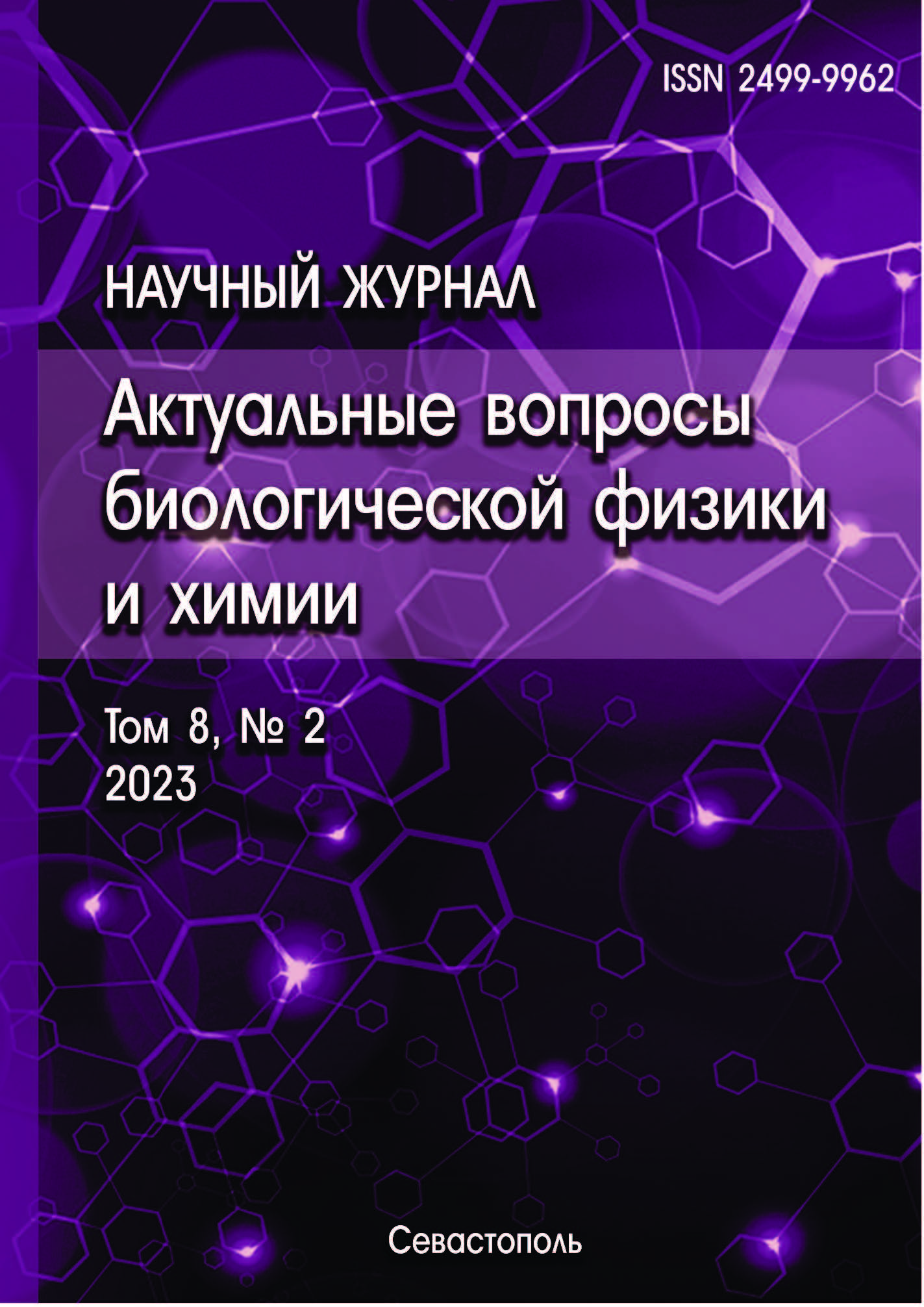Vladivostok, Vladivostok, Russian Federation
Vladivostok, Vladivostok, Russian Federation
Vladivostok, Vladivostok, Russian Federation
Lipopolysaccharide-binding proteins from two common jellyfish species Aurellia aurita and Ropelema asamushi were isolated and purified, and the interaction of lipopolysaccharides (LPS) of various structural types with LBP was studied. By inhibiting the interaction, it was found that both proteins specifically bind to the lipid and core fragments of the LPS molecule. There are two types of binding sites in LBP with Kd = 3,28 × 10-6 M and Kd = 0,13 × 10-6 M (for the protein from A. aurita) and Kd = 3,66 × 10-6 M and Kd = 0,27 × 10-6 M (for protein from R. asamushi). It has been shown by dynamic light scattering that the binding of LBP to R-LPS leads to the dissociation of LPS micelles. The sizes of LPS aggregates decrease from 200 nm to 25–30 nm in the composition of LPS–LSB complexes. The data of electrokinetic measurements indicate the neutralization of the negative charge of Rd-LPS (-42,2 mV) in the LPS-LSB-R. asamushi complex up to -4,4 mV. S-LPS micelles from E. coli do not disaggregate upon binding to LBP, which is apparently due to the shielding of lipid A by O-specific chains in the S-LPS molecule. The binding of LPS to LBP may affect their endotoxic properties.
lipopolysaccharide, lipopolysaccharide binding proteins, binding parameters, disaggregation
1. Iwanaga S., Lee B.L. Recent advances in the innate immunity of invertebrate animals. J. Biochem. Mol. Biology, 2005, vol. 38, pp.128-150, doi:https://doi.org/10.5483/bmbrep.2005.38.2.128.
2. Warren H.S., Glennon M.L. et al. Binding and Neutralization of Endotoxin by Limulus Antilipopolysaccharide Factor. Infect. Immun., 1992, vol. 60, pp. 2506-2513, doi:https://doi.org/10.1128/iai.60.6.2506-2513.1992.
3. Saito T., Kawabata S.I., Shigenaga T., Takayenoki Y., Cho J., Nakajima H., Hirata M., Iwanaga S. A Novel Big Defensin Identified in Horseshoe Crab Hemocytes: Isolation, Amino Acid Sequence, and Antibacterial Activity. J. Biochem., 1995, vol. 117, pp. 131-1137.
4. Tobias P.S., Mathison J.C., Ulevitch R.J. A family of lipopolysaccharide binding proteins involved in responses to Gram-negative sepsis. J. Biol. Chem., 1988, vol. 263, pp. 13479-13481.
5. Amparyup P., Sutthangkul J., Charoensapsri W., Tassanakajon A. Pattern recognition protein binds to lipopolysaccharide and β-1,3-glucan and activates shrimp prophenoloxidase system. J Biol Chem., 2016, vol. 291, no. 20, p. 10949, doi:https://doi.org/10.1074/jbc.A111.294744.
6. Bakholdina S.I., Naberezhnykh G.A., Gorbach V.I., Isaev, M.P., Solov’eva T.F. Marine Invertebrates of the Sea of Okhotsk as a New Source of Lypopolysaccharide Binding Proteins. Russian J. Mar. Biol., 2014, vol. 40, pp. 59-65 (In Russ.). EDN: https://elibrary.ru/RXDGQT
7. Ovchinnikova T.V, Balandin S.V., Aleshina G.M., Tagaev A.A., Leonova Y.F., Krasnodembsky E.D., Men’shenin A.V., Kokryakov V.N. Aurelin, a novel antimicrobial peptide from jellyfish Aurelia aurita with structural features of defensins and channel-blocking toxins. Biochem. Bioph. Res. Com., 2006, vol. 348, pp. 514-523, doi:https://doi.org/10.1016/j.bbrc.2006.07.078. EDN: https://elibrary.ru/LJVXMX
8. Naberezhnykh G.A. New Lipopolysaccharide Binding Proteins from the Jellyfises Aurelia aurita and Rhopilema asamushi of Sea of Japan. J Marine Biol Aquacult., 2017, vol. 3, no. 2, pp. 1-5.
9. Andra J., Howe J., Garidel P., Rossle M., Richter W., Leiva-Leon J., Moriyon I., Bartels R., Gutsmann T., Brandenburg K. Mechanism of interaction of optimized Limulus-derived cyclic peptides with endotoxins: thermodynamic, biophysical and microbiological analysis. Biochem. J., 2007, vol. 406, pp. 297-307, doi:https://doi.org/10.1042/BJ2007027936.
10. Bradford M.M. A rapid and sensitive method for quatitation of microgram quantities of proteins utilizing the principle of protein dye binding. Anal. Biochem., 1976, vol. 72, pp. 248-534, doi:https://doi.org/10.1006/abio.1976.9999.
11. Galanos O. Luderitz O., Westphal O. A new method for the extraction of R lipopolysaccharides. Eur. J. Biochem., 1969, vol. 9, pp. 245-249, doi:https://doi.org/10.1111/j.1432-1033.1969.tb00601.x.
12. Hogg P.J, Johnston S. Caluation of equilibrium constants for antigen-antibody interactions by solid-phase in imunoassay: the binding of paraquat to its elicited mouse monoclonal antibody. Mol. Imunol., 1987, vol. 24, pp. 797-801, doi:https://doi.org/10.1016/0161-5890(87)90064-2.
13. Chen Y.-Y., Chen J.-C., Kuo Y.-H., Lin Y.-C., Chang Y.-H., Gong H.-Y., Huang C.-L. Lipopolysaccharide and b-1,3-glucan-binding protein (LGBP) bind to seaweed polysaccharides and activate the prophenoloxidase system in white shrimp Litopenaeus vannamei. Develop. Comp. Immunol., 2016, vol. 55, pp. 144-151, doi:https://doi.org/10.1016/j.dci.2015.10.023.










